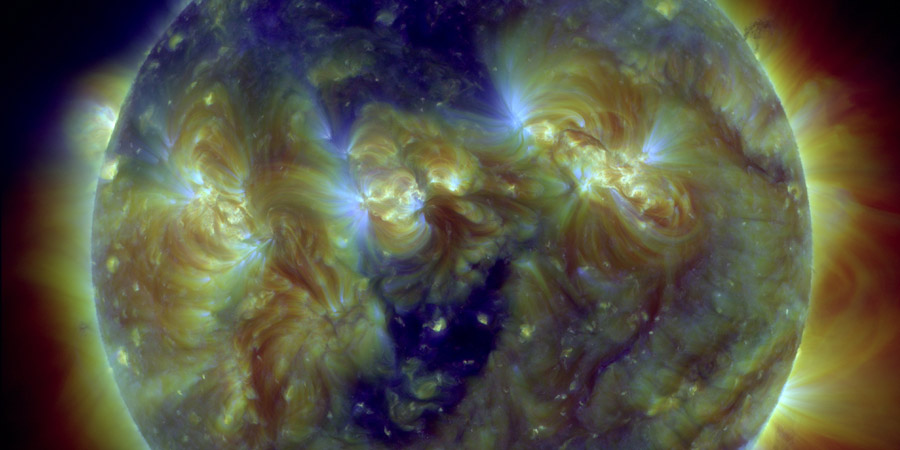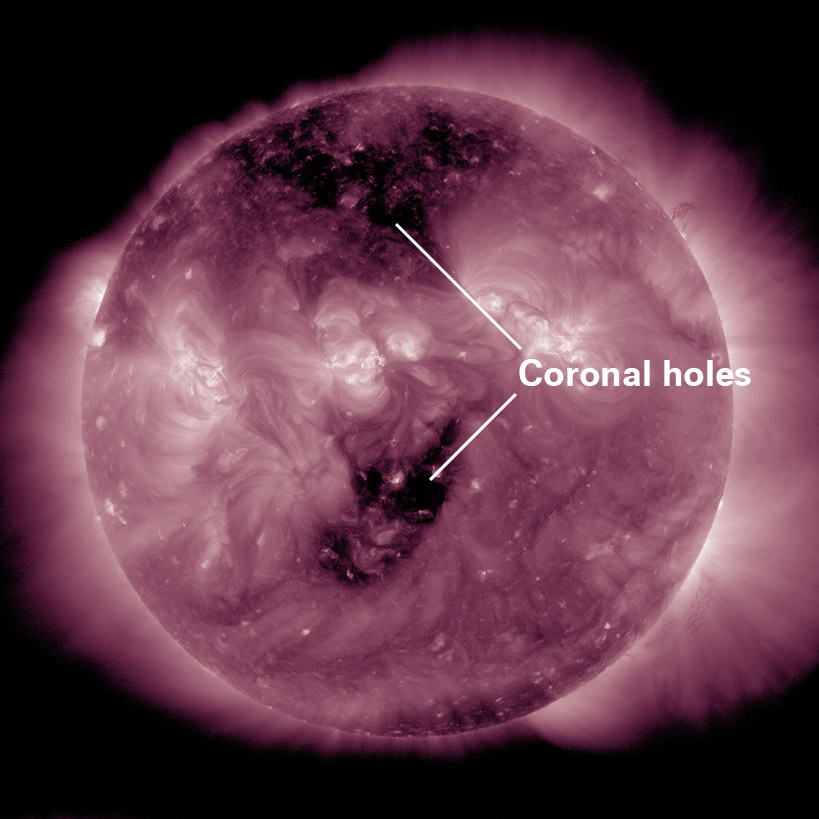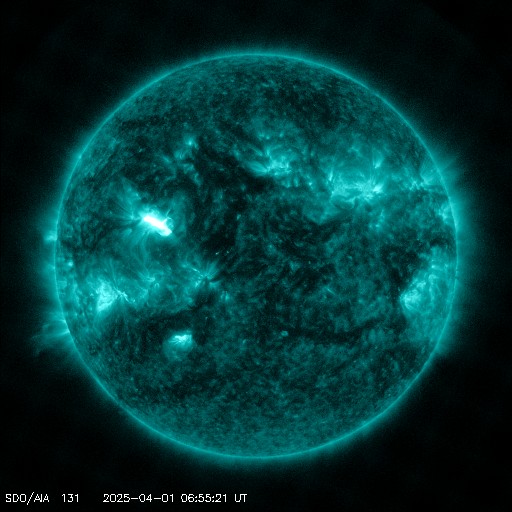Coronal hole faces Earth
Friday, 27 November 2015 23:11 UTC

A southern hemisphere coronal hole close to the solar equator is now facing Earth. This is the same coronal hole that was responsible for a strong G3 geomagnetic storm on 7 October 2015.
It is however very unlikely that we see a strong G3 geomagnetic storm from this coronal hole in the next few days. It is starting to close and shrunk considerably in size during it's two week transit across the far side of the Sun. Click here if you want to know how this coronal hole looked like on 5 October and here on 31 October during the two previous rotations as it faced Earth.
A northern hemisphere polar coronal hole with a southward extension is also facing Earth right now but it might be too far north to influence Earth. It is however likely that the southern hemisphere coronal hole close to the solar equator sends solar wind our way that will arrive at Earth. A minor G1 geomagnetic storm can not be excluded in about 3 days from now (1 or 2 December) when the stream is expect to arrive.

Image: Two coronal holes are facing Earth as can be seen on this image from NASA SDO.
This is the most exciting news that we've been able to bring you in quite some time as the Sun is very quiet right now. There hasen't even been a C-class solar flare today. None of the sunspot regions currently on the Earth-facing solar disk are complex enough for M or X-class solar flares.
The solar wind is also very slow around 300km/s. The Kp-index is not expect to go above 2 until the coronal hole solar wind stream arrives.
Thank you for reading this article! Did you have any trouble with the technical terms used in this article? Our help section is the place to be where you can find in-depth articles, a FAQ and a list with common abbreviations. Still puzzled? Just post on our forum where we will help you the best we can!
Latest news
Latest forum messages
Support SpaceWeatherLive.com!
A lot of people come to SpaceWeatherLive to follow the Sun's activity or if there is aurora to be seen, but with more traffic comes higher server costs. Consider a donation if you enjoy SpaceWeatherLive so we can keep the website online!

Latest alerts
07:15 UTC - 10cm Radio Burst
Begin Time: 01/04/2025 06:45 UTC Maximum Time: 01/04/2025 06:45 UTC Duration: 1 minutes. Peak flux: 190 sfu
07:06 UTC - Solar flare
Strong M5.61 flare
06:48 UTC - Radio Blackout
Moderate R2 radio blackout in progress (≥M5 - current: M5.36)
06:45 UTC - Radio Blackout
Minor R1 radio blackout in progress (≥M1 - current: M1.7)
02:15 UTC - Solar protons
Moderate S2 Solar Radiation Storm - Infrequent effects on HF radio through polar regions and satellite operations
Space weather facts
| Last X-flare | 2025/03/28 | X1.1 |
| Last M-flare | 2025/04/01 | M5.6 |
| Last geomagnetic storm | 2025/03/27 | Kp5 (G1) |
| Spotless days | |
|---|---|
| Last spotless day | 2022/06/08 |
| Monthly mean Sunspot Number | |
|---|---|
| February 2025 | 154.6 +17.6 |
| Last 30 days | 128.5 -22.7 |



